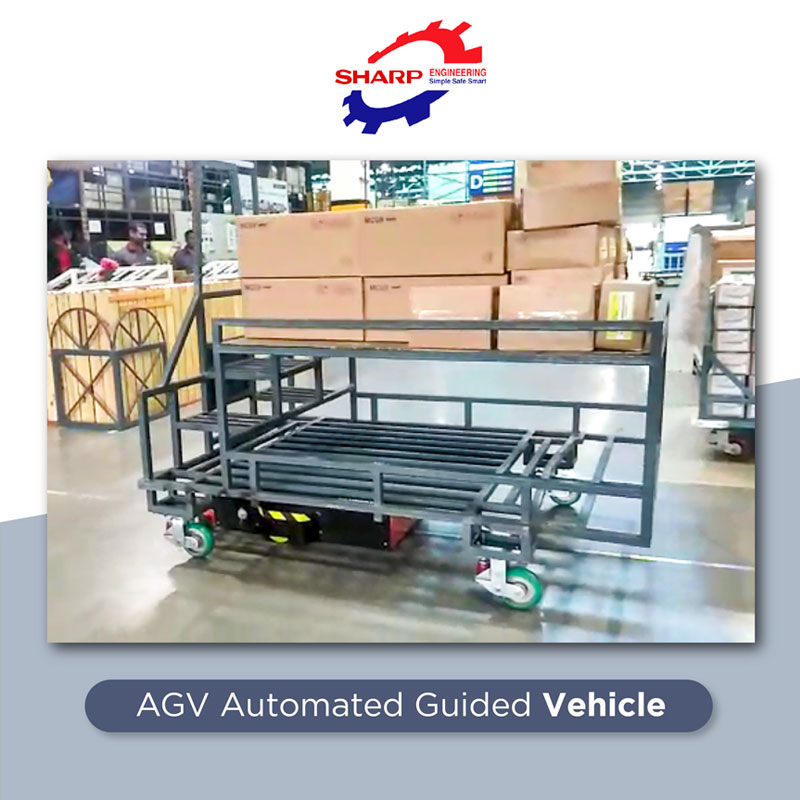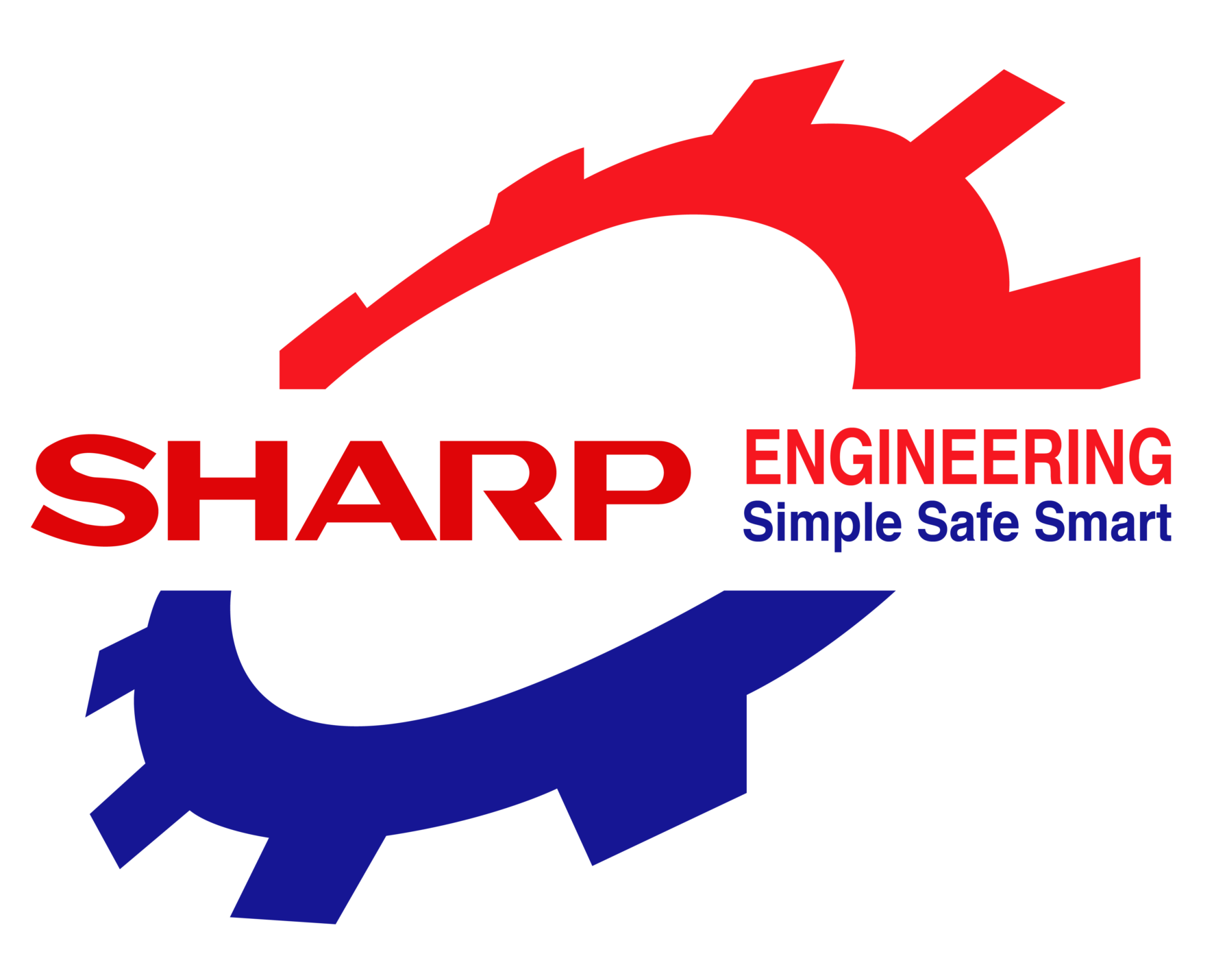AGV Automated Guided Vehicles
In today’s swiftly evolving world, technology continues to shape and transform several industries, and the logistics sector is no exception. One of the significant advancements in the field of logistics is the emergence of AGV Automated Guided Vehicles. These intelligent, self-driving vehicles are revolutionizing the way goods are transported, offering increased efficiency, flexibility, and cost-effectiveness. In this article, we will explore the world of AGVs, their applications, benefits, and the right supplier for buying AGVs.

Introduction: The Rise of AGV Automated Guided Vehicles
The logistics industry plays a critical role in ensuring the efficient movement of goods from one point to another. Customarily, this process heavily relied on manual labour and conventional material handling equipment. Though, with the advent of AGVs, logistics operations have witnessed a significant transformation. AGVs are robotic vehicles equipped with sophisticated sensors, navigation systems, and controls that allow them to operate autonomously.
Understanding AGV Automated Guided Vehicles
Automated guided vehicle technology is an intelligent machine designed to transport materials or goods within a specified area without the need for human intervention. These vehicles utilize a combination of technologies such as lasers, cameras, and magnetic guidance to navigate and interact with their environment. AGVs can efficiently handle various types of loads, ranging from small individual items to large pallets or containers.
Specifications of AGV Automated Guided Vehicles
Types of AGV Automated Guided Vehicles and their functions
Automated guided vehicles AGV come in different types, each tailored to perform specific tasks based on the requirements of the industry. Let’s explore some of the common types of AGVs and their functions:
- Forklift AGVs: Forklift AGVs are designed to mimic the functionality of traditional forklifts. These vehicles are capable of lifting and stacking loads at different heights, making them ideal for applications where vertical movement is required, such as high-bay warehousing.
- Unit Load AGVs: Unit Load AGVs are designed to handle large, uniform loads, such as pallets or containers. These vehicles are commonly used in warehouses and distribution centers to transport goods from one location to another with precision and efficiency.
- Tugger AGVs: Tugger AGVs are specifically designed to pull or tow carts or trailers within a facility. These vehicles are often used in manufacturing environments where the transportation of materials between different workstations is required.
- Pallet Trucks AGVs: Pallet Trucks AGVs are equipped with forks to lift and transport palletized loads. These vehicles can efficiently move pallets within a warehouse, eliminating the need for manual labour and enhancing productivity.
Benefits of Implementing AGVs in Logistics
The adoption of AGVs in the logistics industry brings numerous advantages to businesses. Let’s delve into some of the key benefits:
- Increased Safety and Reduced Accidents: AGVs are equipped with advanced safety features, including collision avoidance systems and obstacle detection sensors. By eliminating human errors and reducing accidents, AGVs create a safer working environment for both employees and the equipment itself.
- Enhanced Efficiency and Productivity: AGVs operate with precision, consistency, and high speed, resulting in improved operational efficiency. These vehicles can work around the clock without breaks, significantly reducing the time required to complete tasks and increasing overall productivity.
- Flexibility and Adaptability: AGVs can be easily reprogrammed and reconfigured to adapt to changing operational needs. This flexibility allows businesses to optimize their workflow, accommodate new processes, and quickly respond to fluctuations in demand.
- Cost-effectiveness and Return on Investment (ROI): Although the initial investment in AGVs may be significant, the long-term cost savings they offer make them a worthwhile investment. AGVs eliminate the need for manual labour, reduce operational costs, minimize product damage, and optimize resource utilization, resulting in a favourable return on investment over time.
Applications of AGV Automated Guided Vehicles
The versatility of AGVs allows them to be deployed across various industries. Here are some notable applications:
- Airports and Seaports: AGVs are utilized in airports and seaports to handle baggage, cargo, and containers. These vehicles enable efficient movement of goods, enhance security measures, and contribute to the overall smooth functioning of transportation hubs.
- Warehousing and Distribution Centers: Automated guided vehicles in warehouses are used for tasks such as inventory management, order picking, and goods transportation. These vehicles enhance operational efficiency, reduce labour costs, and minimize errors in inventory tracking.
- Manufacturing and Assembly Lines: In manufacturing and assembly environments, AGVs play a crucial role in automated guided vehicles material handling, supplying components, and transporting finished products. AGVs streamline the production process, improve line balancing, and enable just-in-time delivery.
- Healthcare Facilities: AGVs have found their way into healthcare facilities for tasks like medication delivery, linen transportation, and waste management. These vehicles optimize workflow, ensure timely delivery of critical supplies, and reduce manual labour in healthcare operations.
Challenges and Considerations in AGV Implementation
While AGVs offer numerous benefits, their successful implementation requires careful consideration of various factors. Here are some key challenges:
- Workforce Adaptation and Training: The introduction of AGVs may require reskilling or reassigning the existing workforce to different roles. Proper training and education are essential to help employees adapt to the changing work environment and maximize the benefits of AGV implementation.
- Infrastructure and Environment: AGVs rely on a well-designed infrastructure that includes navigational aids, charging stations, and designated pathways. Creating an environment conducive to AGV operations is essential for optimal performance.
- Integration with Existing Systems: Integrating AGVs with existing software systems and processes can be complex. Compatibility issues, data synchronization, and seamless communication between AGVs and other equipment must be addressed for efficient coordination.
- Maintenance and Support: AGVs, like any other machinery, require regular maintenance and support. Ensuring a robust maintenance program and access to technical support are crucial to keeping AGVs operational and minimizing downtime.
A Reliable Supplier of AGV Automated Guided Vehicles: Sharp Engineering
In a world where efficiency and productivity are paramount, businesses need trustworthy and innovative solutions to enhance their logistics operations. AGV Automated Guided Vehicles have emerged as a transformative technology, revolutionizing the way goods are transported and managed within facilities. When it comes to AGV solutions, Sharp Engineering is trusted and dependable automated guided vehicles manufacturers. With cutting-edge technology, customized solutions, comprehensive support, and an unwavering commitment to quality, Sharp Engineering empowers businesses to unlock their full potential in the dynamic world of logistics.
FAQs
Are AGVs capable of navigating complex environments?
Yes, AGVs are equipped with advanced sensors and navigation systems that enable them to navigate complex environments with ease. These vehicles can detect obstacles, adjust their routes, and make real-time decisions to ensure safe and efficient operations.
Can AGVs be customized to specific industry requirements?
Absolutely! AGVs are highly customizable to meet the specific requirements of different industries. From load capacity to specialized attachments, AGVs can be tailored to suit a wide range of applications and operational needs.
What are the primary cost considerations when implementing AGVs?
The primary cost considerations when implementing AGVs include the initial investment in the vehicles, infrastructure setup, software integration, maintenance, and workforce training. However, it’s important to note that AGVs offer long-term cost savings and a favourable return on investment.
How do AGVs contribute to workplace safety?
AGVs contribute to workplace safety by reducing the risks associated with manual material handling and transportation. These vehicles are equipped with collision avoidance systems, obstacle detection sensors, and strict adherence to predefined safety protocols, ensuring a safer working environment for employees.
Can AGVs collaborate with human workers?
Yes, AGVs can collaborate with human workers, particularly through the integration of collaborative robots (Cobots). This collaboration allows AGVs to handle tasks that require human skills, while machines handle repetitive or physically demanding activities, creating a harmonious human-robot work environment.

About Sharp Engineering
At Sharp Engineering, we are well-equipped with technology to design superior performance AGV Automated Guided Vehicles and are renowned in designing the best customized version to meet specific criteria and are with industry-leading engineers who provide you excellence with innovation. Sharp Engineering’ success is based on extensive product range, top-notch engineering, more than 25 years’ experience, and guarantee of after-sales service and consultation support.
Market Area of Sharp Engineering
Sharp Engineering supplying to these Indian Cities.
Mumbai| Pune |Ahmedabad| Bengaluru| Chennai| Delhi| Kolkata| Hyderabad| Agra| Ajmer| Aligarh| Amravati| Amritsar| Asansol| Aurangabad| Bareilly| Belgaum| Bhavnagar| Bhiwandi| Bhopal| Bhubaneswar| Bikaner| Bilaspur| Bokaro Steel City| Chandigarh| Coimbatore| Cuttack| Dehradun| Dhanbad| Bhilai| Durgapur| Erode| Faridabad| Firozabad| Ghaziabad| Gorakhpur| Gulbarga| Guntur| Gwalior| Gurugram| Guwahati| Hamirpur| Hubli–Dharwad| Indore| Jabalpur| Jaipur| Jalandhar| Jalgaon| Jammu| Jamnagar| Jamshedpur| Jhansi| Jodhpur| Kakinada| Kannur| Kanpur| Karnal| Kochi| Kolhapur| Kollam| Kozhikode| Kurnool| Ludhiana| Lucknow| Madurai| Malappuram| Mathura| Mangalore| Meerut| Moradabad| Mysore| Nagpur| Nanded| Nashik| Nellore| Noida| Patna| Puducherry| Purulia| Prayagraj| Raipur| Rajkot| Rajamahendravaram| Ranchi| Rourkela| Ratlam| Salem| Sangli| Shimla| Siliguri| Solapur| Srinagar| Surat| Thanjavur| Thiruvananthapuram| Thrissur| Tiruchirappalli| Tirunelveli| Tiruvannamalai| Ujjain| Vijayapura| Vadodara| Varanasi| Vasai-Virar City| Vijayawada| Visakhapatnam| Vellore| Warangal
Sharp Engineering supplying to these locations across the world :
African Countries
South Africa , Nigeria, Kenya, Ghana, Ethiopia, Tanzania, Johannesburg, Algeria, Angola, Benin, Botswana, Burkina Faso, Burundi, Cabo Verde, Cameroon, Central African Republic (CAR), Chad, Comoros, Democratic Republic of the Congo, Côte d’Ivoire, Djibouti, Egypt, Equatorial Guinea, Eritrea, Gabon, Gambia, Guinea, Guinea-Bissau, Lesotho, Liberia, Libya, Madagascar, Malawi, Mali, Mauritania, Mauritius, Morocco, Mozambique, Namibia, Nigeria, Rwanda, Sao Tome and Principe, Senegal, Seychelles, Sierra Leone, Somalia, South Sudan, Sudan, Swaziland, Togo, Tunisia, Uganda, Zambia, Zimbabwe.
Gulf and other Countries
Oman, Qatar, Kuwait, Saudi Arabia, Dubai, Bahrain, Iran, United Arab Emirates, Australia, Sydney, Queensland, Melbourne, Perth, Adelaide, New Zealand, Auckland, Wellington, Hamilton.
Asian Countries
Afghanistan, Armenia, Azerbaijan, Bahrain, Bangladesh, Bhutan, Brunei, Cambodia, China, Cyprus, Georgia, India, Indonesia, Iran, Iraq, Israel, Japan, Jordan, Kazakhstan, Kuwait, Kyrgyzstan, Laos, Lebanon, Malaysia, Maldives, Mongolia, Myanmar (Burma), Nepal, North Korea, Oman, Pakistan, Palestine, Philippines, Qatar, Russia, Saudi Arabia, Singapore, South Korea, Sri Lanka, Syria, Taiwan, Tajikistan, Thailand, Timor-Leste, Turkey, Turkmenistan, Uzbekistan, Vietnam, Yemen
South American Countries
Argentina, Ecuador, Suriname, Bolivia, Brazil, Guyana, Uruguay, Chile, Colombia, Paraguay, Peru, Venezuela
Note: Please note that the information on this document is for illustration purposes only as information may vary with individual products, their grade and applications industries or uses and therefore cannot be guaranteed as accurate. © Copyright 2021 © Sharp Engineering All Rights Reserved (Terms of Use). Recreation of any materials from the site is strictly prohibited without permission. Sharp Engineering’ products are sold exclusively through Sharp Engineering’ website. Use Terms | Privacy. Please contact us to discuss precise product specifications and requirements and obtain advice on which products are required to suit your exact application needs sharpstrapping@gmail.com

